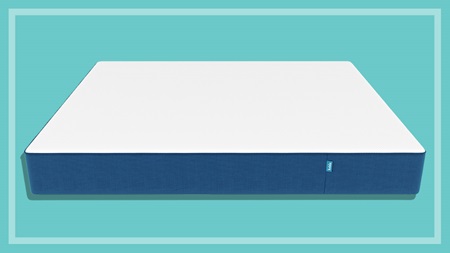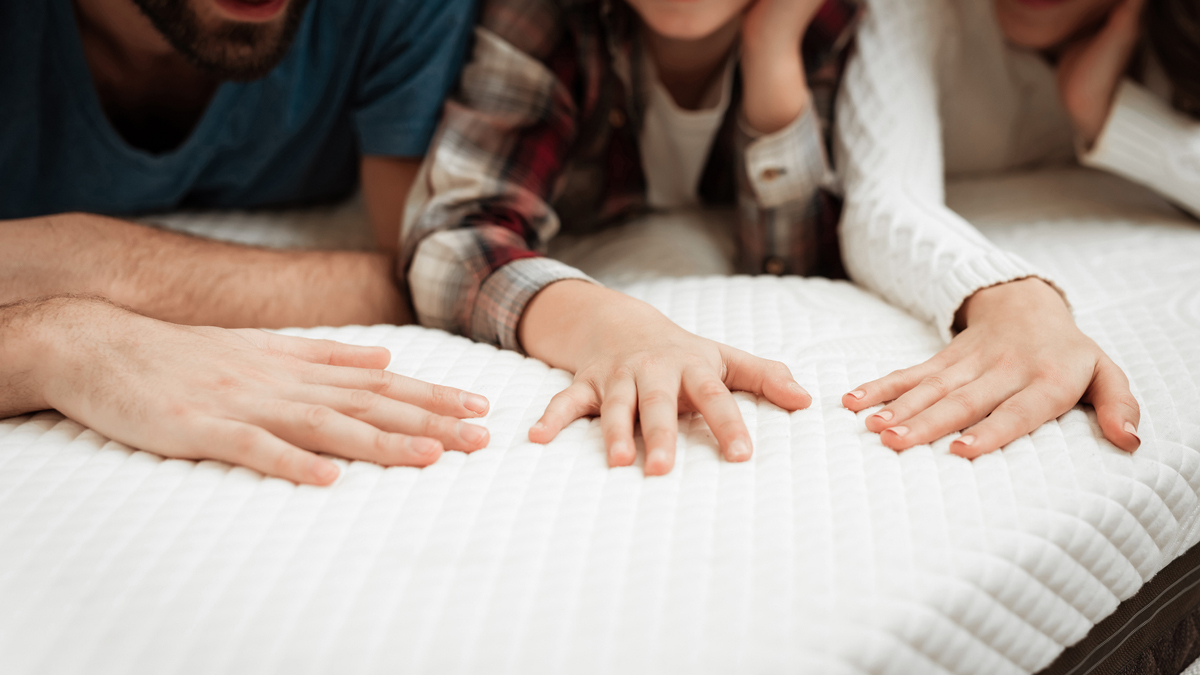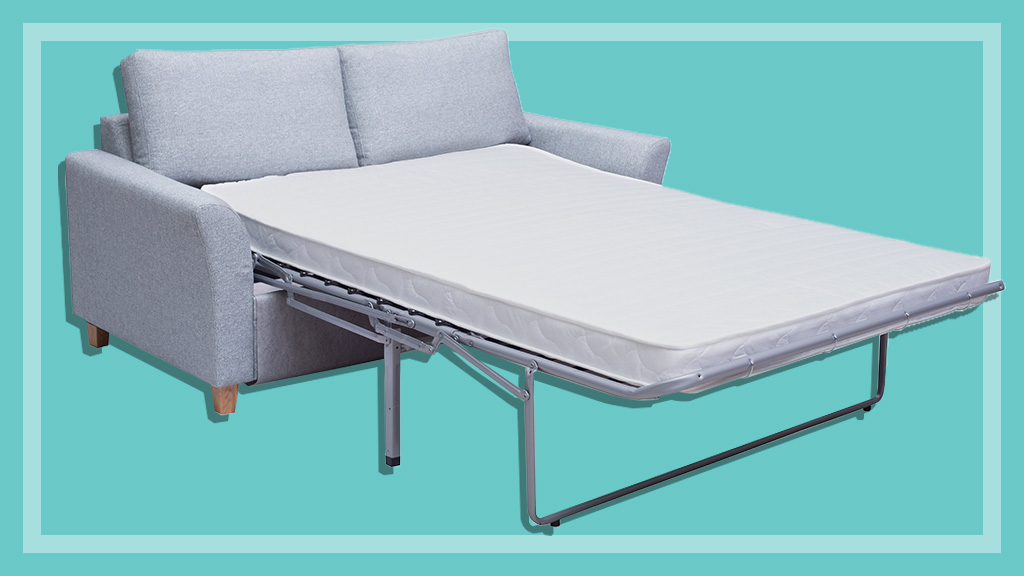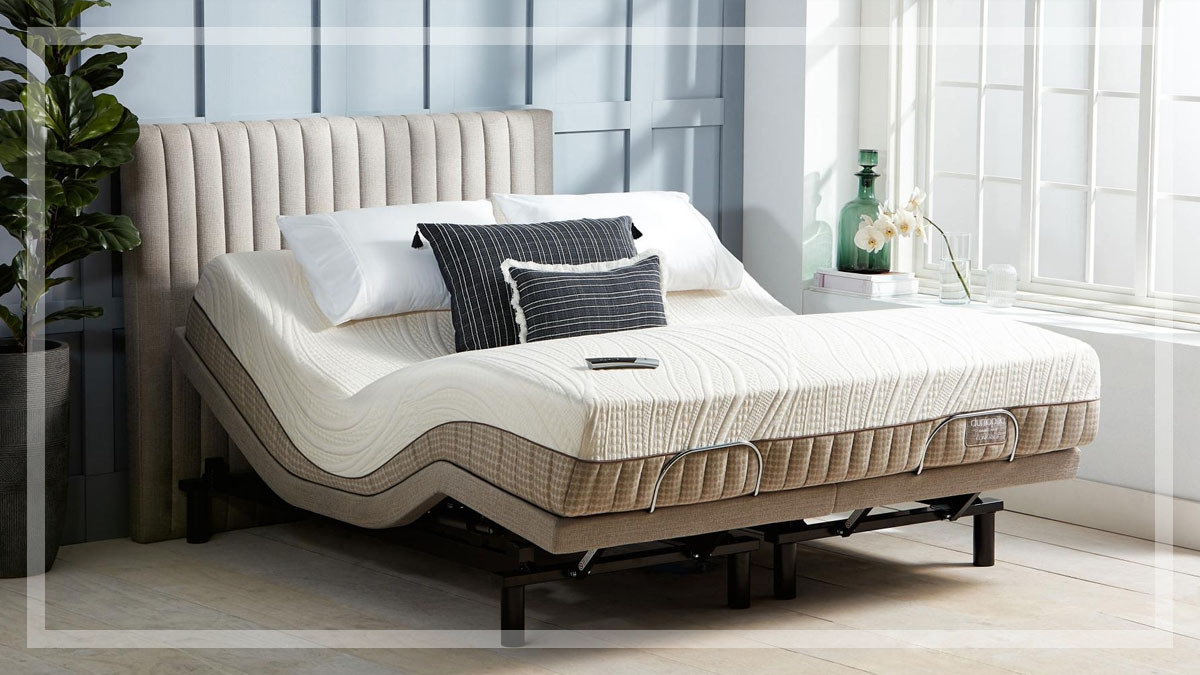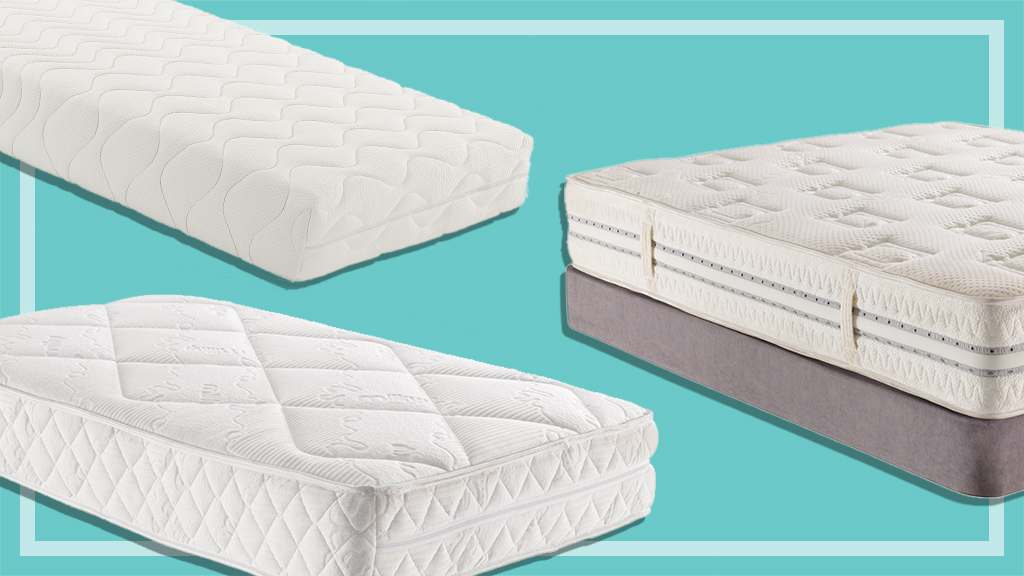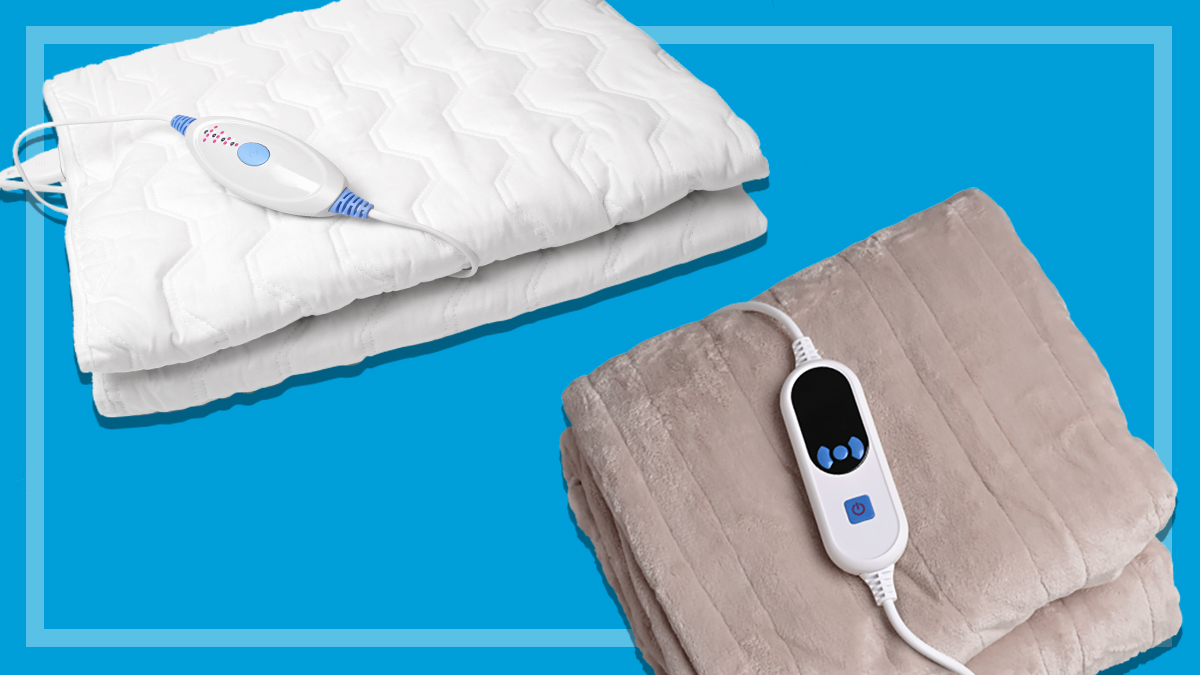Get our independent lab tests, expert reviews and honest advice.
5 ways to get better sleep
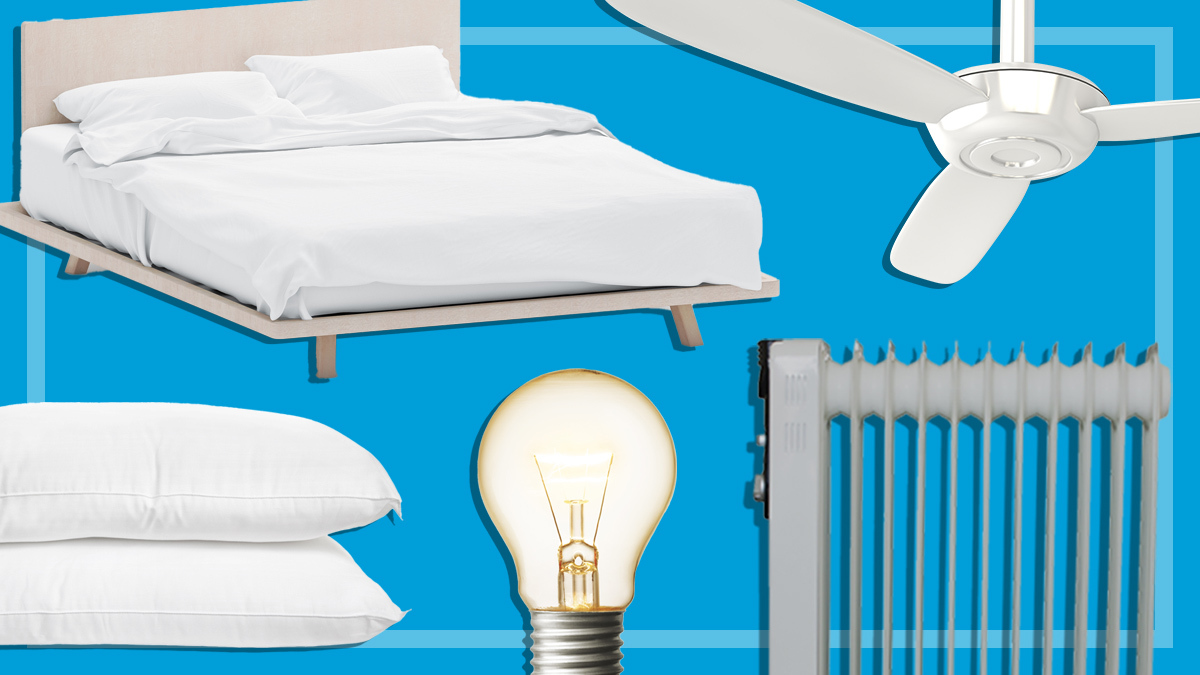
Anyone who has tossed and turned all night knows how wonderful it is when you finally get a solid night’s sleep. But there are many things that can get in the way, from an uncomfortable pillow or a too-firm mattress, to bad lighting or a room that’s not your ideal temperature.
According to data company Statista, less than half (45%) of Australians think they’re getting enough sleep. And while we can’t help you with a snoring partner or a needy pet that likes to sleep a little too close for comfort, CHOICE experts have spent hours analysing various types of pillows and mattresses to help you create the perfect sleeping environment.
We also have some heating, cooling and lighting tips to get your bedroom atmosphere just right.
Here are our top five tips to help you get the sleep of dreams.
1. Buy or customise a mattress that’s perfectly suited to you
Mattress manufacturers make all sorts of wild claims when spruiking the benefits of their mattresses, often about how firm they are, or how ‘warm’ or ‘cool’ they’ll make you feel.
Our test results show that mattresses rarely, if ever, live up to their advertised ‘firmness’ claims. But more and more mattress-in-a-box manufacturers are letting you customise the firmness level.
We’ve tested some with variable firmness layers (usually made out of foam) that you can add or remove until the mattress reaches your desired comfort.
More and more mattress-in-a-box manufacturers are letting you customise the firmness level
Some use ‘toppers’ that have different levels of firmness on each side that you can flip for a different feel, and others have alternative firmness options on each side of the mattress.
A few even have so-called ‘firmness zones’, which let you adjust the feel on each side of the bed (in case you prefer your mattress firmer than your partner does).
Mattresses that are adjustable are noted under ‘Claimed firmness’ in our mattress review.
Do you ‘run hot’?
And there’s good news if you have a tendency to sweat or overheat at night. For the first time ever, our testing found that some mattresses do live up to their claims of being ‘warm’ or ‘cold’, which means you could be closer to finding a mattress that can help you sleep comfortably if you ‘run hot’.
CHOICE mattress expert Peter Zaluzny says: “We measured the insulation of all the mattresses in our test and eight felt cold or very cold, while three felt warm. This is a big shift from what we previously saw, which was most tested mattresses coming back as ‘normal’ (medium-warm).”
2. Assess your pillow
A pillow that’s on its last legs or harbouring dust mites and bacteria could be hampering your sleep in many ways, from giving you an achy neck to aggravating your allergies. Not to mention the general unpleasantness of resting your head on a pillow covered in manky stains.
We’ve put together some tips to help you know when it’s time for a new pillow, including a simple test you can do at home (watch our video below).
And if your pillows simply need a refresh or a turn through the wash, read our guide on how to clean your pillows to ensure you don’t ruin them.
We’ve looked at the comfort and support given by feather, wool, foam, latex and polyester pillows
Our experts have also carefully tested a range of pillows and scored them based on factors that could mean the difference between a comfortable night’s sleep and an unbearable one.
We’ve looked at the comfort and support given by feather, wool, foam, latex and polyester pillows immediately after opening and using them over time, for both back sleepers and side sleepers, and measured how the pillows physically change after heightened simulated use.
CHOICE members can read the results of our pillow reviews.
How to know it's time for a new pillow
3. Get your bedroom temperature right
Research suggests that the optimal temperature for sleep is around 15–20°C, although this of course depends on your individual preference.
Winter heating
If your bedroom gets much colder than that in winter, you’ll probably want to either rug up with fleecy PJs, extra blankets and a hot water bottle, or get yourself a heater that can keep the temperature in that comfortable range.
A reverse-cycle air conditioner on a low, quiet fan setting or a portable column heater are both good solutions.
CHOICE experts say that a reverse-cycle air conditioner is the more energy-efficient option to heat your bedroom overnight, but if you don’t have one or can’t afford the installation fees, certain types of heaters are fine, too.
CHOICE experts say that a reverse-cycle air conditioner is the more energy-efficient option to heat your bedroom overnight
“Most heaters – particularly convection, panel and oil column heaters which don’t have exposed heating elements – are safe to leave on overnight on a low setting, as long as they’re well clear of any furniture, curtains and so on, as per the ‘leave a metre for heaters’ rule,” says CHOICE heating expert Chris Barnes.
“Leaving heaters with exposed elements on unattended overnight or operating an unflued gas heater when you’re sleeping can be unsafe.”
Summer cooling
In the summer, good ventilation and a cool breeze blowing over your skin can help send your body into the relaxed sleep zone. Our experts have found that cheap portable fans – that can cost as little as $15 – are just as effective as more expensive models when it comes to the strength of the air they blow. See our pedestal fan and tower fan reviews.
If you’re after a ceiling fan, we give each model we test a ‘bedroom score’ so you can choose a model that performs well on its lowest setting without being too noisy and disrupting your zzzs.
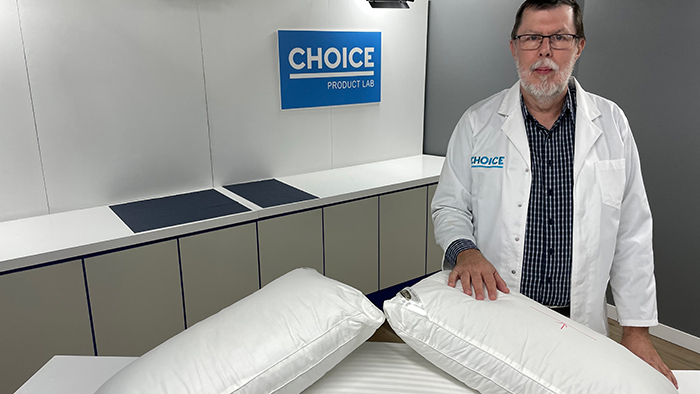
Air conditioner tips
If you’re using an air conditioner for heating or cooling, create the optimal environment for sleep by using the ‘sleep timer’ function as well as the quiet mode.
Sleep timer: This function lets the air conditioner run for a while after you go to bed to keep the room temperature comfortable as you fall asleep. In its most basic form, it simply turns off the air conditioner after an hour or two. Depending on the model, you may be able to set the timer to specify how long it will keep running, and it might also adjust the temperature in steps. For example, in heating mode the sleep timer can gradually reduce the set temperature. The room cools and the air conditioner quietly winds down.
Quiet mode: Most air conditioner indoor units run very quietly, at least on their low fan speeds. But the outdoor unit can get noisy, which may be a problem at night, especially if it’s near a bedroom. Many models have a silent or quiet mode that dials down the outdoor unit’s compressor and fan operation so that it runs quietly (but also with somewhat reduced power).
4. Adjust your lighting
How you light your home, and particularly your bedroom, can have a huge impact on your sleep rhythms.
Light bulbs come in a range of ‘colour temperatures’ from 2000 to 6500 Kelvin (K). The higher the number, the cooler the colour temperature and the bluer the light it emits. For a bedroom, you want soft, warm and gentle lighting to prepare your body for snoozing, so go for something around a warm white (3000K) bulb that emits a yellowish light.
CHOICE lighting expert Denis Gallagher says LED smart lights can be handy for customising your lighting for an ideal sleep environment.
You could program your smart lights so that when you say ‘I’m going to bed’, they change to emit a red or amber light to reduce disruption to your circadian rhythms
“Programmable LED smart lights can help you go to sleep or wake up more easily,” he says. “You could program your smart lights using voice activation so that when you say ‘I’m going to bed’, the lights in your bedroom will change to emit a red or amber light to reduce disruption to your circadian rhythms.”
“You could also schedule the lighting around the home to gradually turn off or alter their colour temperature throughout the evening to put you in the right frame for a good night’s sleep. You can adjust the timings over the year so it matches what’s happening outdoors as seasons change.”
5 ways to get better sleep
1. Buy or customise a mattress that’s perfectly suited to you
2. Assess your pillow
3. Get your bedroom temperature right
4. Adjust your lighting
5. Be wary of products with big claims
5. Be wary of products with big claims
Just like the mattress manufacturers who say you’ll never sleep better than on their product, there are many brands and marketers making similarly dubious claims you should be wary of.
“Products that promise to give you a good night’s sleep have long been a feature of CHOICE’s lab testing and investigations,” says Barnes.
“Marketing claims promising a better night’s sleep are everywhere, but the evidence in many areas is lacking. In 2018, CHOICE gave Bioglan a Shonky award for useless homeopathic sleep tablets, and the 2020 Shonkys featured a ‘sleep survey’ used to sell expensive beds.”
If you’re having serious sleep problems, it may be worth consulting a health professional before spending your money
Over the years we’ve looked at many sleep remedies, from weighted blankets and homeopathic tablets to products that are designed to combat snoring and sleep apnoea. Our findings aren’t always positive.
Remember that sleep issues can be caused by a wide variety of factors. Although there are, indeed, many products and remedies that could help you obtain that perfect night’s rest, if you’re having serious sleep problems, it may be worth consulting a health professional before spending your money.

